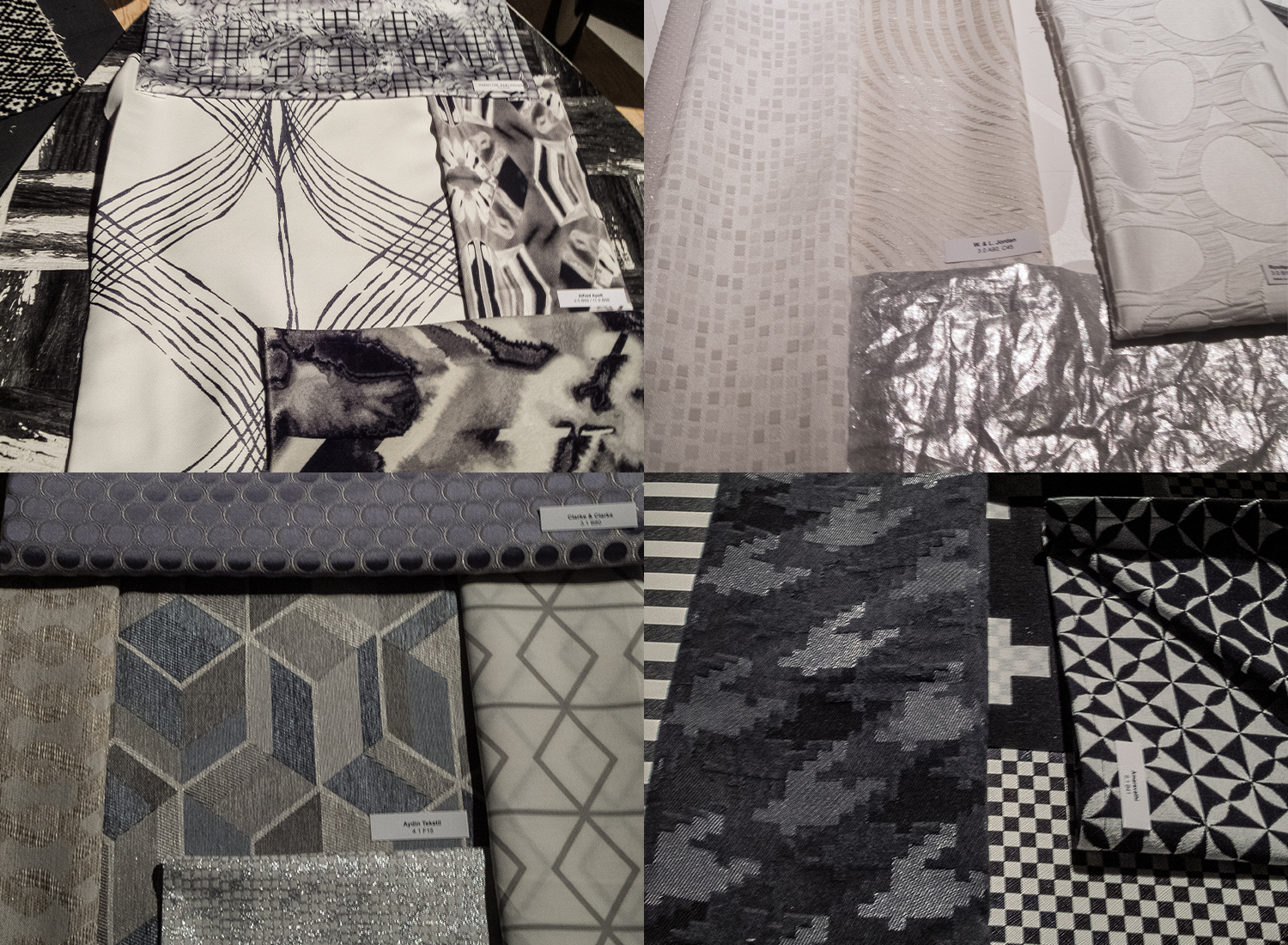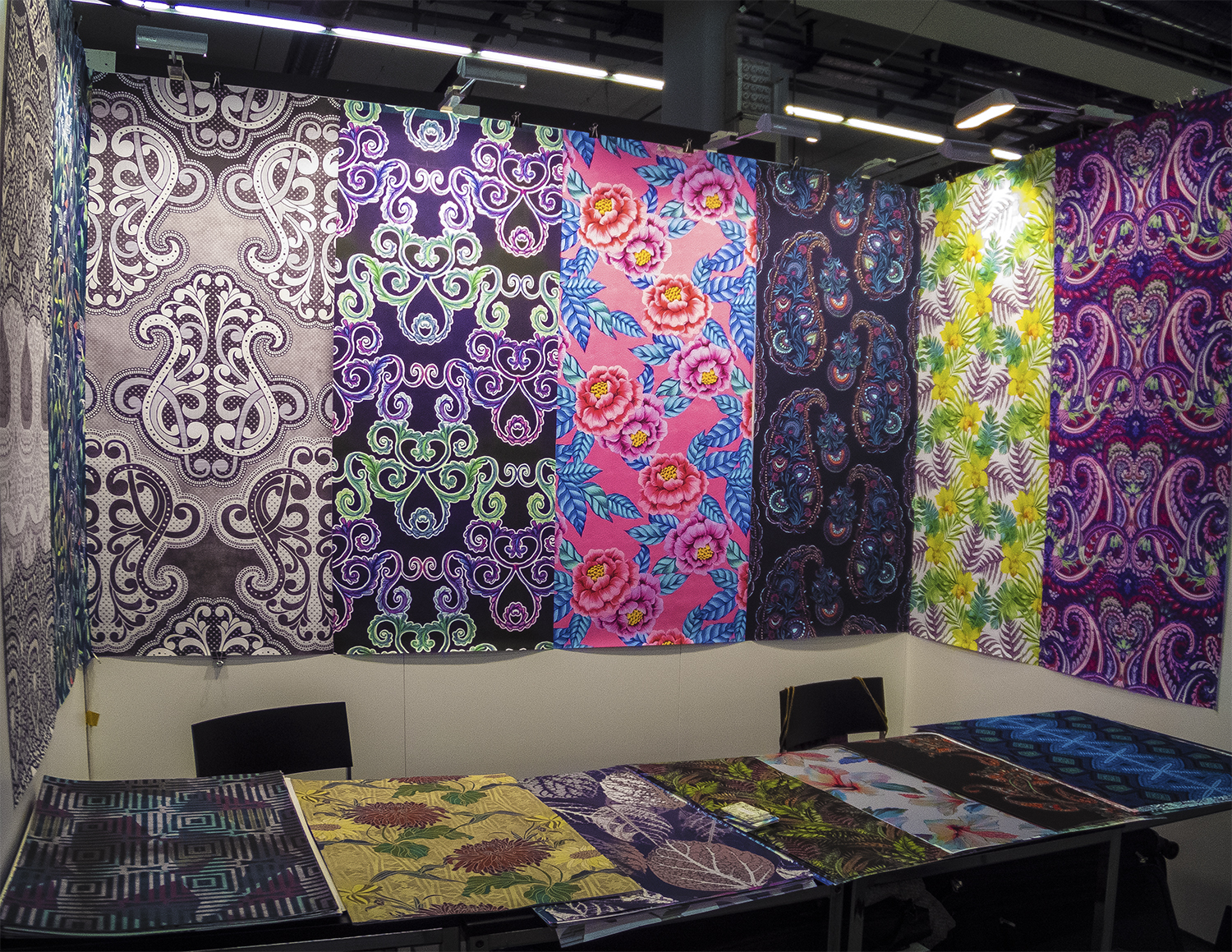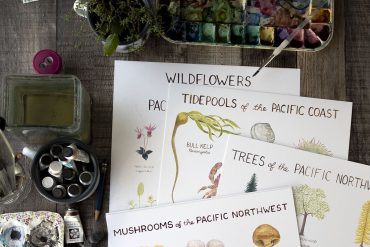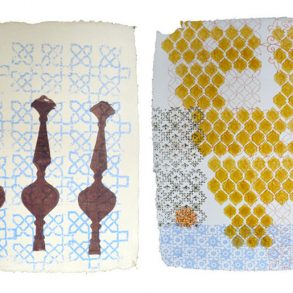
I’ve been dreaming about the Heimtextil Fair for ages. Ever since I was a Textile Major at the Shenkar College of Engineering and Design, I’d been hearing a legendary tale that, somewhere in Germany, there was a special event that offered the ultimate key to happiness for textile designers. It was a place you could show off your best textile work, see the trends – and even start them.
I landed my first post-studies job at a small studio, which designed for Heimtextil and catered to trends in wallpaper and soft furnishings. I always nurtured a feeling that, one day, I had to try doing this work independently.
A few years went by, and I switched from interior design to swimwear design, which was also a fascinating experience. My designs were colorful, intense and sexy, in contrast to the subtle tones used in wallpapers. I put tropical flowers on top of leopard spots, with glitter on top … you get the idea.
About a year ago, my husband and I moved to Berlin, and I quit my day job as a textile designer and set out on my own. Of course, the first thing I did after arriving to Germany was to visit the Heimtextil Fair in Frankfurt.
The fair was so large! For three days I browsed through all the halls, where everything from Dolce Gabbana wallpapers to mass-market Chinese bed linens was displayed. The cherry on top was the Designer Hall, where textile studios show off their latest pattern collections for wallpaper, bedding, kitchen, soft furnishings, etc. Lines and rows of stands, small and large, with the fanciest designs on the walls and reams of designs on the tables. Hand-drawn artwork, printed, woven, knitted, ethnic, modern, fusion, detailed, minimalistic … every pattern imaginable was there.
They say that the Designer Hall shrinks bit by bit each year and the industry becomes more and more difficult. Participation in Heimtextil is expensive, and the factories purchase fewer and fewer designs. While large, well-known studios are busy, smaller and younger studios may be up to sharing a little bit of their experience.
So that was last year.
This year, I was busy developing designs for stock, licensing, and private customers. Then, about a month before the Heimtextil 2016 Fair, a friend contacted me and asked if I wanted to pair up at the show and share a booth. I am quite productive and have hundreds of illustrations and designs ready in my library, so the short notice wasn’t a problem for me. It took me about a week to think it through.
I decided to do it.

The preparation
That left me three weeks to prepare for the show, with Christmas and New Year’s in between.
I figured I had enough designs, but that I had to make an selection that could be altered for size and color, categorize the designs into several themes, and then find the time to create a few new ones.
What I basically needed was to find a print shop – and that was it!
Easy, right?
Well, the reality hit me hard.
I decided that for my first show I would invest in about 70 patterns. I didn’t want to go way over my head budget-wise, because I wanted to treat this as a learning experience and not a commercial one. Putting all my money into printing everything I’ve ever designed seemed wrong. I calculated that I could bring about 70 patterns that I was really proud of. My friend had just over 100 patterns – our designs added up to an extremely small number compared to the hundreds and thousands of patterns that the large studios bring – but we were here to learn.
One day I visited about four or five different print shops to test their printing quality. I liked one of them, but got a very expensive offer – 1600 Euro for 70 prints (i.e., what I estimated would be in my collection). I’m sure that prices for prints differ greatly all over the world, but that was the best offer I got in Berlin.
Then I began searching for suitable paper, which took a few days. Then I began the designing process. Along the way, many different questions arose: How would I pack the patterns? Doing research on a bag for artists took a few days as well. Same thing for materials, receipts, fliers, stickers, branding and such. (I’ve posted a table on my website showing all the equipment and other expenses on my website.)
Taking care of those arrangements was much more time-consuming than I’d ever imagined.
Printing during the holidays was a mess that involved time delays, missing supplies … I won’t even go into telling the excruciating details. The bottom line is that I did get my collection ready in time. (I also grew a few new grey hairs on my head.)
In between I chose about 50 of the most suitable designs for the show and individually edited almost every one of them. I divided my work into 3 collections: paisleys, florals, and abstracts. Each collection contained about 25 patterns. I strived to create diversity within every collection: variations in size, mood, density, color, but with harmonious overall look for the whole collection.
Then I designed another 25 patterns to complete what I thought was missing and also accumulated some new ideas.
When ordering a spot through the Heimtextil website – which you should do about 6 months prior to the show – you will see a price list for exhibitors. Major exhibitors book the same spots year after year, so there’s a limited choice, but at least you can choose the kind of stand you would like (frontal, corner, open or closed). There are different prices for different spots. Also, take into account that you must order tables, chairs, lighting (everything is customisable, but the prices differs greatly from basic to advanced), and all of it adds to the stand cost. We had to slightly alter our order a few days before the show, which is not a great idea at all! Luckily, everything went through okay, but I wouldn’t recommend taking a chance like that.
A few days before the fair I was ready with a pile of beautiful designs. The fact that the collection represented my taste and design abilities was a strong plus, especially since I was entering an unknown world.
I carefully packed the designs (what would I do without my husband?) and soon I was on my way on a train. (If you travel from Germany, I strongly recommend the all-inclusive fair tickets.) I had booked an Airbnb apartment close to the fair. If you have an exhibitor or press card, your tickets will include local transportation for the duration of the fair.
My friend and I arrived two days before the grand opening to set up our booth.
Even though the show hadn’t officially begun, the Design Hall was very busy with potential customers. Exhibitors at Heimtextil (for example, wallpaper manufacturers, or curtain factories) can visit you on those days only, so coming early is a good idea.
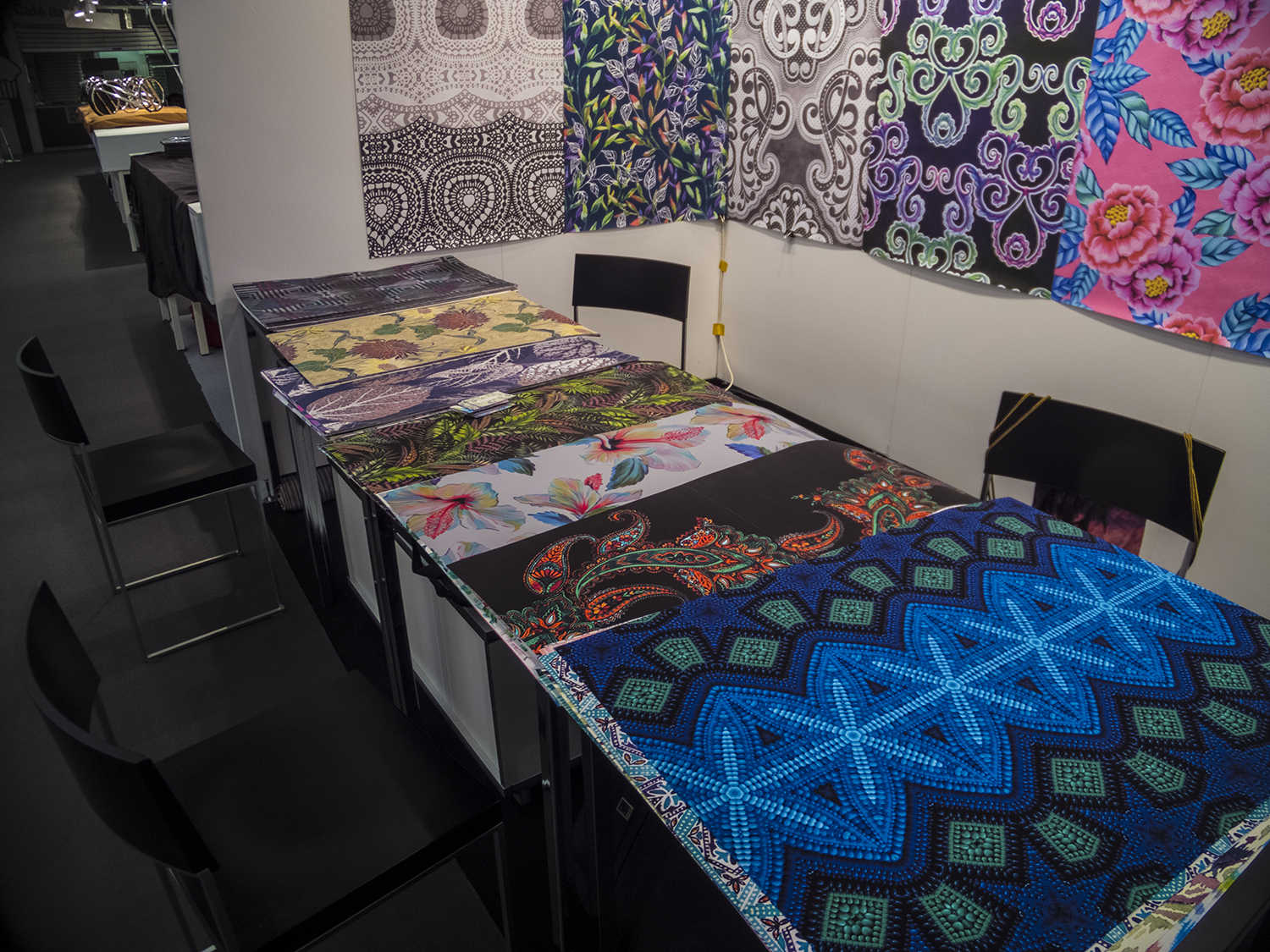
The show
The show proper lasts for four days. For newbies, it’s very interesting to watch the dynamics of well-experienced studios – try to learn as much as you can! Many large, well-established studios are there. No matter how well you design and how ready you think you are, observing how those design giants work reminds you of how much you have to learn – from presentation, to collections, colors, sizes of motifs. On one hand, everything is possible, On the other, all of a sudden you realize that there are great ideas, inspirations, styles and standards. Do yourself a favour: even if you’re an exhibitor and busy at your stand, find time to stroll around the Hall and see what’s happening.
When the fair opens, the buyers rush to see their favourite exhibitors. It’s like saying “hi” to your friends at a party. Here, personal connections define everything. We’ve heard from everybody that it takes from three to five years of just being there before you become “part of the gang” and you attract personal – as opposed to random – interest in your particular stand. That’s a long time and a large financial investment, so be prepared.
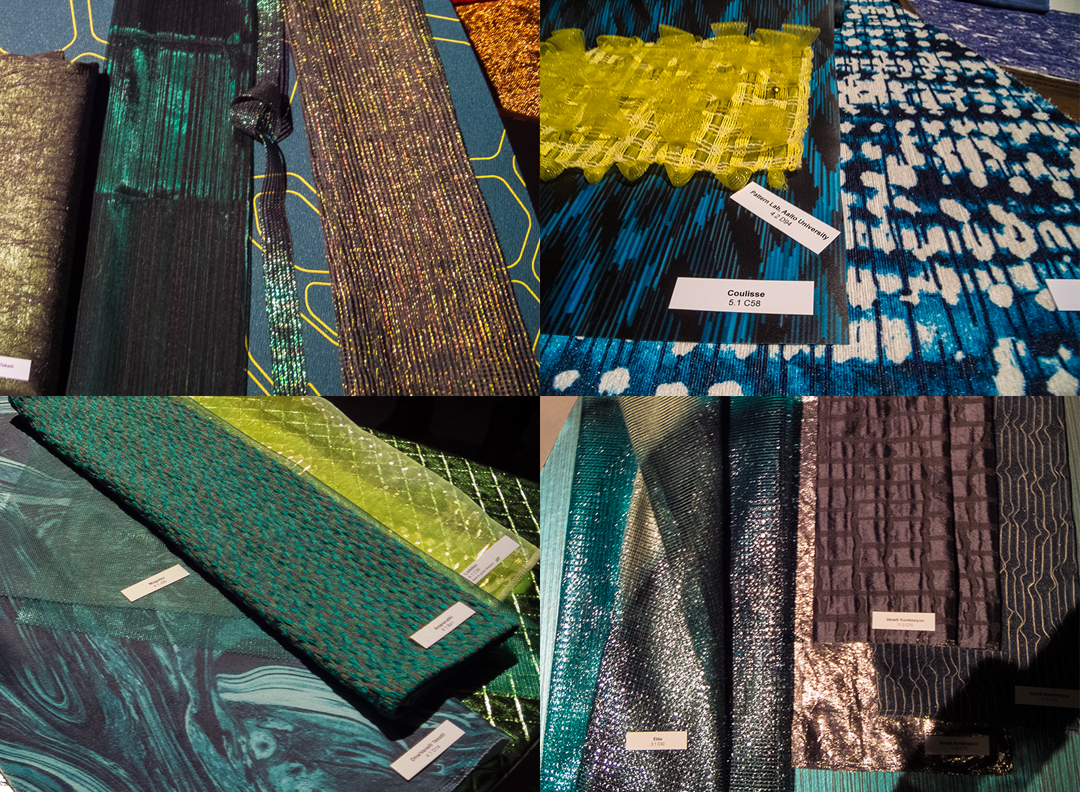
My personal experience
There was a lot going on at the popular studios, but for young, unknown studios such as ours, it was a challenge to attract customers at first. But hey, a few smiles here and there, beautiful designs, and positive energy – and there you go! You have your first potential client! Showing your designs is such a pleasure! Some buyers give you nice feedback, other say even something useful. However, some buyers are quick and poker-faced, and aren’t much into communicating. But part of your job is to remain polite and upbeat, even with a tough customer!
Some people were very focused on what they need (“Show me more of your paisleys!”), others went through our whole collection (luckily, it was a small one). It felt like whenever someone browsed through our designs, it attracted other people to come and see more.
When you’re lucky enough to sell, think through the packaging. It might be unnecessary to go the extra mile to bring large-studio designer bags and folders, but at least have wrapping paper, a nylon sleeve, or whatever. But respect your designs and your clients.
We tried to hand out as many business cards as possible and to build relationships. Nurturing those relationships is something that should be done periodically, and especially before the next fair. That’s what we learned from other designers.
We were lucky enough to sell few designs. It was such an overwhelming experience that our hands almost shook while writing the receipts (be sure to prepare your taxes, receipts and other documents in advance!). Next year I think we’ll need to be less hysterical when good things happen.
One question that arose for me during the show was whether I should have prepared mock-ups for the use of my designs. Some studios show bedding in a bed mockup; wallpapers with a mock-up of a room with the wallpaper, and so on. I’m undecided about the value of this. On one hand, mockups can make it easier to interpret what your design can be used for, and provide some assurance for a buyer. On the other hand, a mockup limits the imagination. If you present bedding, for instance, wallpaper buyers might skip your stand altogether. I guess that with time and growth you naturally become more specific and target your designs toward certain products. Then you can rethink how to present them.
In conclusion, I see my experience at Heimtextil 2015 as the beginning of a journey and an investment in my future development. It’s not an easy production time- and money-wise, so it’s better to enter the market when you’re a more experienced designer. Fortunately, I have both the production and financial ability to make such a commitment at this moment.
Selling is absolutely awesome, but it takes effort and dedication. My resolution to myself is to begin to prepare for the next show six months ahead of the show. Working in advance can better distribute not only your time and effort, but also the financial investment in the exhibition.
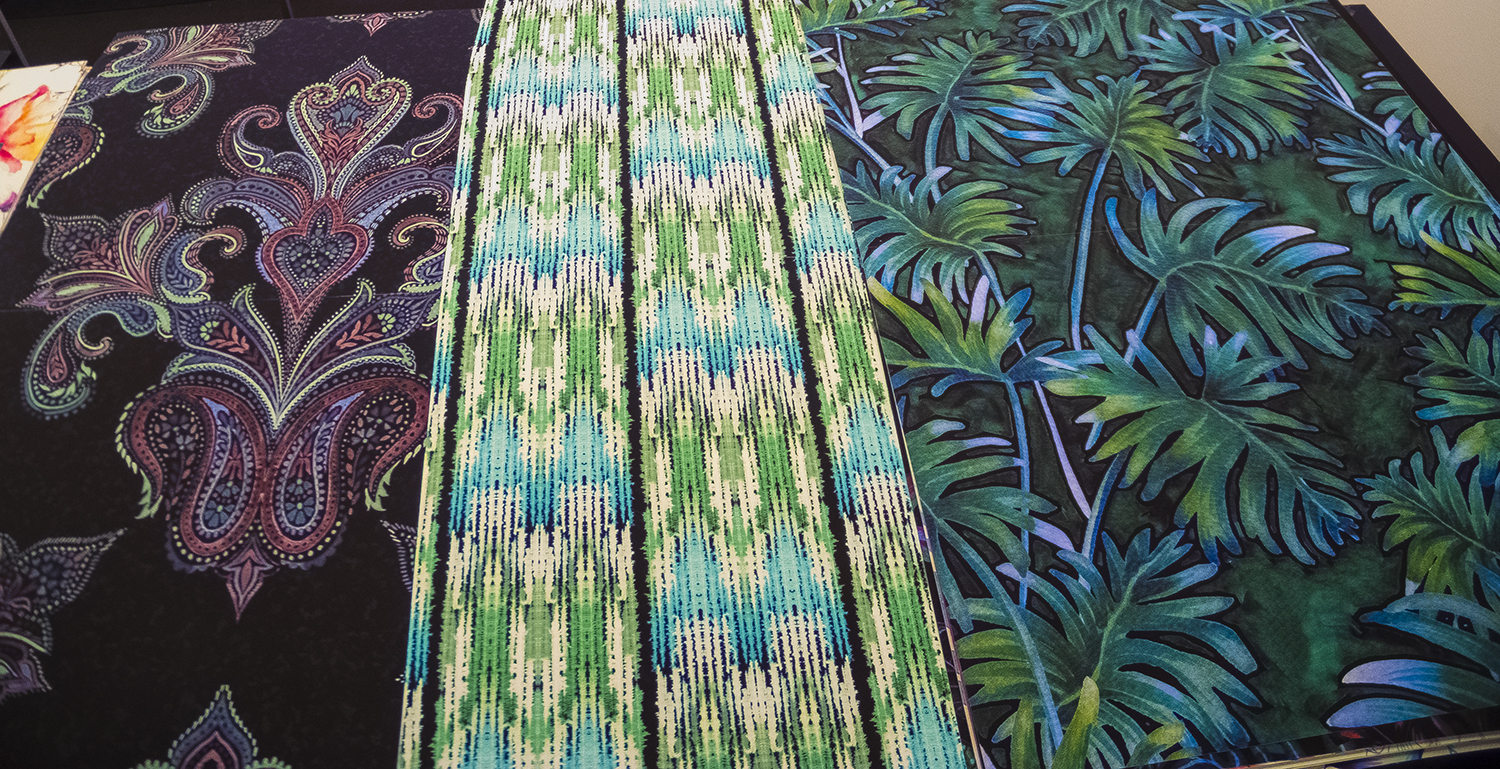 Closeup on my designs
Closeup on my designs
- My website
- My blog, where I have a more detailed Heimtex preparation guides and costs.
- Daily routine of drawing and design at my instagram
- Facebook page
- Behance
- And if you would like to download my designs and elements to use in your own projects, visit my shutterstock page!

